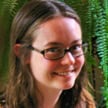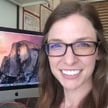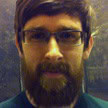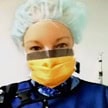-
Asked by Derrick to Jonathan, Kellie, Kevin, Melissa, Stephanie on 23 Apr 2016. This question was also asked by the best likes bats.
-
Stephanie Moon answered on 23 Apr 2016:
Hello 328hemb29–
I do molecular biology in the lab. I grow a lot of different kinds of cells (baker’s yeast, human cells or bacteria) and viruses. After setting up an experiment (like infecting cells with viruses), I’ll either use a microscope to look directly at changes in structures in the cell or mix all of the cells together to isolate bio-molecules like protein, DNA or RNA to see how they change. I use a lot of different kinds of scientific instruments that detect tiny amounts of these bio-molecules and a computer to get data.
-
-
Melissa Wilson Sayres answered on 24 Apr 2016:
As a computational evolutionary biologist, a lot of the data we analyze is generated in collaboration with other labs or large consortiums. For one of our newest projects, sequencing the genome of the Gila monster, we have collaborated with Dr. Dale DeNardo’s lab to collect blood samples from three male and three female Gila monsters, and we will be extracting and sequencing the DNA from these samples.
-
Kevin Baker answered on 25 Apr 2016:
I use a lot of computer programs to process my data. Computers are more dependable at doing statistics than I am! Once I have all of the statistics done, I can then look at my data. The secret to analyzing my data is that I am looking for the major differences between the data points. It is kind of like playing a “find the difference between these two pictures” puzzles.
-
Jonathan Jackson answered on 25 Apr 2016:
Over the years, I have collected data in many different ways. Currently, I am a researcher on a couple of very large projects. We sat down as a group a few years ago and decided on a huge range of experiments we were going to conduct on a group of about 400 older adults. There are so many experiments that each person has to come in about 15 times over 5 years to collect it all. We have people complete questionnaires, sit through clinical interviews, do memory tests on an iPad, lay down in an MRI machine, lay in another big machine called a PET scanner, have blood draws, spinal taps, and cheek swabs for genetic testing. We collect mountains of data over time on hundreds of people, and thankfully, it seems to be helping us discover new and interesting things every day about how the brain changes as it gets older.
-
Kellie Jaremko answered on 25 Apr 2016:
Currently for my clinical work I look through charts to find eligible patients for a retrospective (looking back in time) study. For prospective (a study that looks forward) study we recruit patients by asking them if they want to participate when they come to their regular doctor’s appointment.
Once we have the study subjects we use the electronic medical record to gather background information about them, their medications, details of their operation, and their pain scores. We add all of this about each subject in a database then use math and statistics to see if there is a relationship between these factors to predict how well someone will do.
It’s a lot of numbers and time but finding those connections at the end are cool!






Comments